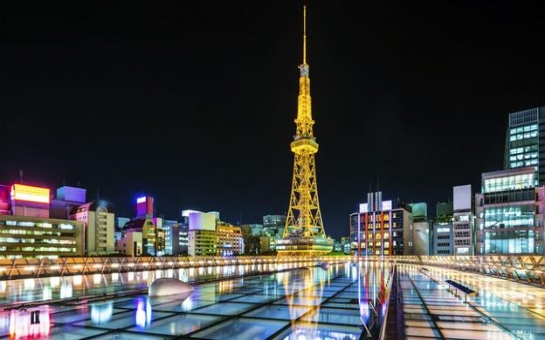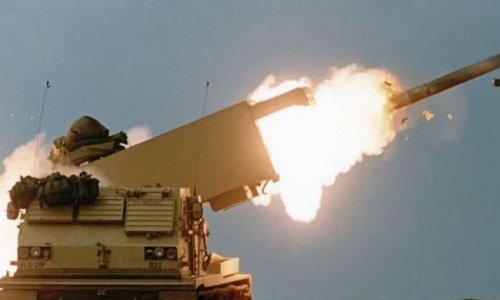Nagoya is the country's manufacturing heartland. It produces almost 40% of Japan’s industrial goods, including automobiles, auto and aircraft parts, and electronics. It is the manufacturing hub of Fuji, Honda, Mitsubishi, Brother Industries and the home base of Toyota.This makes the region a centre for jobs in finance, operations, manufacturing and investment. Nagoya is responsible for 10% of Japan's gross domestic product and 1% of the world's GDP. Indeed, Nagoya’s GDP is greater than that of many nations including Poland and Belgium, and it continues to climb. "My travels to Nagoya are becoming more frequent because of the number of businesses investing there," said Victor Jackman, an independent aviation industry consultant who travels regularly to Japan and worked on the Boeing Dreamliner 787 project. “The Japanese economy is proving very resilient, especially when it comes to tech and manufacturing in the aviation and automotive sector." Japanese carrier All Nippon Airways was the first airline in the world to take delivery of the Dreamliner aircraft, with many of its components produced in Nagoya."Flying the 787, which had strong collaboration between Japan and the US, is especially fitting when I travel to Nagoya," added Jackman, as he embarked upon yet another journey to facilitate sales with Boeing Dreamliner customers like ANA.To boost development and economic investment even more, the area developed the Greater Nagoya Initiative, comprising local and regional governments, educational and research institutions, business communities and local corporations. The initiative has been a boon for companies interested in investing. The Creation Core rental laboratory, for one, helps firms looking to create new business in the area, and Science Exchange Plaza was created as a place to promote and support exchanges between researchers in the industry, academia and new business ventures.Originally the home of three feudal war lords, the city is now transforming into a business centre that is growing in a variety of sectors.In addition to being a hub for the automotive and aviation sector, the area also attracts financial and cultural business. This year, the Annual Conference on Pacific Basin Finance, Economics, Accounting and Management will meet in Nagoya. UNESCO’s World Conference on Education for Sustainable Development will also meet here in November.AirportNagoya Chubu Centrair International airport, built on an artificial island, is one of Japan’s busiest. It is roughly 45km from downtown and most easily reached by the train plying the route every half hour (1200 yen, equivalent to $12). Taxis are also available from stands outside the arrivals hall; drivers are exceptionally courteous during the 45-minute journey, possibly because the cost from the airport to downtown is 12,000 yen ($120 USD)!The airport terminals are bright and modern with plenty of natural light. Before passing through security, there is a wide selection of shops and cafes laid out in town-square fashion. Also available are Japanese onsen baths on the fourth floor, which are ideal for those that want to soak away the time while they await their departure. Families love the airport observation deck with views of active taxiways with planes close enough for photographs.Once in the city, the clean and easy-to-navigate six-line subway can carry visitors from one end to the other for between 200 yen to 330 yen ($2 to $3). Taxis can be hailed just by raising a hand. Careful when you step up to the black cars — their rear door swings open automatically to admit you. Taxi drivers rarely speak anything but Japanese so it is helpful to have your address written out. Money mattersJapan is an expensive place to visit and do business, but credit cards are widely accepted at hotels and most restaurants. The local currency is the yen (roughly 100 yen equates to $1). Plan to exchange currency via bank or automated teller machines as taxis don’t accept credit cards.The city’s classic miso-based nikomi udon noodle soup, with thick and chewy noodles served in hot miso soup, clocks in at around 1200 yen ($12). Taking a client for dinner can cost many multiples of that when alcohol and multiple courses are considered.Cultural know-howJapan has a strict cultural etiquette, which is even more important in the business environment. Exchanging business cards is mandatory; they should be presented with two hands to the recipient. The most important person in the room should be presented with your card first. Accept a proffered card with both hands and place it on the table in front of you or in a special case. Never put it in a wallet or back pocket where it will be sat upon. This is considered the height of rudeness.Non-Japanese aren’t expected to bow, but a slight bow when meeting and shaking hands shows an appreciation for local norms. Keep eye contact to a minimum, and never stand too close to another person. One’s title is very important in Japanese culture and it is expected that one would interact, at least at first, with someone of their own stature.Your seat placement in meetings has strong cultural significance. The seat farthest away from the door is considered the most important — stemming from feudal times when the back seat was the safest place in case of an attack. You should accept this seat if offered.HotelsThe new, 153-room Royal Park Hotel is a favourite for its five-minute proximity to the JR (Japan Rail) Nagoya train station. With high-tech guest rooms that vary from compact singles (common in some Japanese hotels) to larger double rooms and suites, the price fits most budgets.Marriott Associa Hotel's 774 rooms are located adjacent to the JR Nagoya train station in one of the two Central Towers that form a city landmark. Its views offer panoramic cityscapes from its tall towers. Most business travellers appreciate the dual-level shopping centre located at its base putting dozens of restaurants and shops in reach without having to leave the building.Dinner for oneFollow in the footsteps of locals and head directly for up-and-coming Izakaya Street after work to find dozens of small pubs (izakaya) on the east side of the Nagoya Station that also serve food. People typically stop in for a bite or a drink in several progressing down the road. Popular stops are Soramame, an old Japanese public bath renovated into a chic modern Japanese bar and Tarahuku, a bistro that offers Japanese western fusion dishes with a fine rice-wine selection. The house-cured beef in wine sauce is a perennial favourite and Nagoya’s signature red miso-based dishes are also on the menu.On the other side of Nagoya Station, the western part of Izakaya Street is more authentic with a trio of popular izakaya offering local dishes. Tosakaya has its own chicken skewered yakitori bar, Furaibo offers Nagoya’s famous Tebasaki (chicken wings), and Umaimon-ya serves another regional specialty in tatami rooms (guests sit on the ground with feet tucked into special cubbies under the floor-level table.)Given the nature of automotive and technology work in the area, there is a large expatriate Brazilian community. As a result, there are plentiful churrascerias and Brazilian eateries available including Sapucai, in the bustling Sakae business neighbourhood, where the grill is always hot and the caipirinhas strong.Off the clockSadly, many of the area’s historic sites were destroyed in World War II, but a few remain. Originally home to one of Japan’s famous warlords, Nagoya Castle (one of the city's first settled areas and rebuilt in 1959 after war damage and only five minutes from Shiyakusho subway station) is now a tourist landmark in the city centre. It is visible from many hotels as it sits in the heart of Meijo Park, one of the largest green areas of Nagoya. This is a great place to enjoy nature while also getting a dose of authentic Japan from its Edo period. Visitors can wander through the castle to explore historic artwork and statues for a small fee of 500 yen ($5). The best time to visit town is between March and May when the cherry blossoms are in full bloom.Special considerationsBusiness meetings are a formal affair and humour is often frowned upon unless initiated by the potential client. Don’t be surprised if business isn’t concluded after the first meeting; it may sometimes take several gatherings, including informal get-togethers at a restaurant. Drinking can be involved and saying no can be considered rude. It is best to leave some food or drink behind so as not to signal a second round. In any situation, try to avoid saying no directly; instead, politely decline to avoid unpleasantness. It is considered odd to fill your own sake or beer glass — it is generally the host’s duty to keep you topped up. In turn, fill your host’s cup.(BBC)Bakudaily.Az
Asia’s overlooked business dynamo
World
22:39 | 03.10.2014

Asia’s overlooked business dynamo
Chances are you own something from Nagoya. When you drive your car, fly in a plane or use a printer, you are likely using parts made or designed in Japan’s fourth largest city. Business travellers may be less enthusiastic about a trip to this industrial city than its flashy cousin, Tokyo, but there’s no denying its importance.
Follow us !










